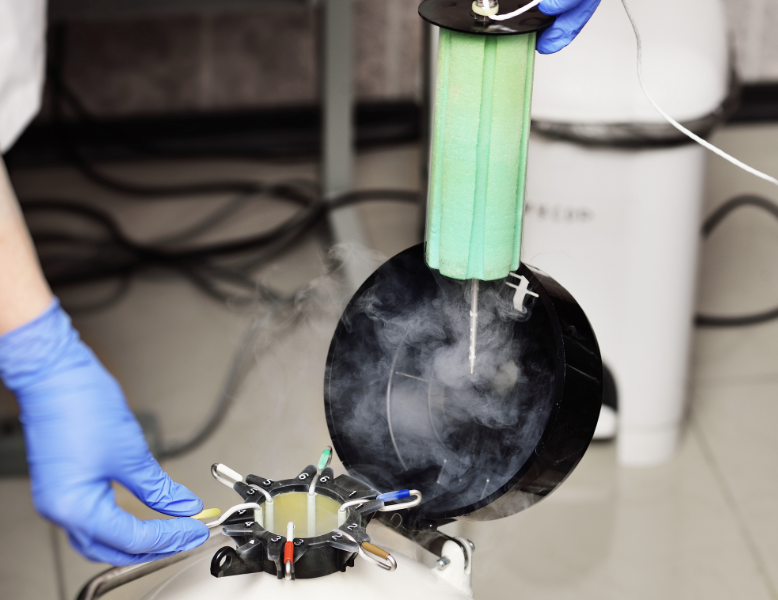Choosing the Right Biobanked Sample from Providers
Written by: BioSample Connect Staff

In the dynamic field of biomedical research, the quality and suitability of biobanked samples play a pivotal role in the success of your studies. Selecting the right sample from a biobank can be a complex process, involving numerous considerations to ensure that the sample meets your research needs. At BioSample Connect, we understand the intricacies involved in this selection and aim to guide you through the process. Here’s a comprehensive guide to help you choose the right biobanked sample from providers.
1. Understand Your Research Requirements
Before you begin your search for biobanked samples, it’s crucial to have a clear understanding of your research requirements. Define the specific parameters of your study, including:
- Type of Sample: Determine whether you need tissue, blood, plasma, serum, DNA, RNA, or other types of samples.
- Disease State: Specify the disease or condition of interest.
- Demographic Information: Identify the demographic criteria such as age, gender, ethnicity, and medical history.
Source: National Institutes of Health (NIH) guidelines emphasize the importance of detailed planning and understanding of research requirements for selecting biobanked samples.
2. Evaluate the Quality of the Biobank
Not all biobanks are created equal. Evaluate the quality and reliability of the biobank by considering:
- Accreditation and Certifications: Look for biobanks accredited by recognized organizations like the College of American Pathologists (CAP) or the International Organization for Standardization (ISO).
- Standard Operating Procedures (SOPs): Ensure the biobank follows stringent SOPs for sample collection, processing, storage, and distribution.
- Quality Control Measures: Check if the biobank performs regular quality control checks and provides data on sample integrity and viability.
Source: The College of American Pathologists (CAP) and ISO standards provide benchmarks for assessing the quality of biobanks.
3. Assess Sample Metadata and Documentation
Comprehensive metadata and documentation are essential for the utility of biobanked samples. Ensure the biobank provides:
- Detailed Clinical Data: Information on patient diagnosis, treatment history, and outcomes.
- Sample Processing Details: Documentation on how the samples were collected, processed, and stored.
- Ethical Compliance: Records of ethical approvals and informed consent from donors.
Source: Ethical guidelines from the World Health Organization (WHO) stress the importance of thorough documentation and ethical compliance in biobanking.
4. Consider the Sample’s History and Usage
The history and prior usage of the sample can impact its suitability for your research. Consider:
- Storage Duration: Determine how long the sample has been stored. While well-preserved samples can remain viable for years, recent samples might be preferred for certain analyses.
- Previous Studies: Check if the sample has been used in prior studies and whether it has been depleted or compromised in any way.
Source: Research published in the Journal of Translational Medicine highlights the impact of storage duration and prior usage on sample quality.
5. Evaluate Accessibility and Support
The ease of accessing samples and the level of support provided by the biobank can influence your decision. Look for:
- Search and Request Tools: User-friendly online platforms to search for and request samples.
- Customer Support: Availability of knowledgeable staff to assist with queries and logistical arrangements.
- Turnaround Time: Efficient processing and delivery times to meet your project deadlines.
Source: The iSpecimen Marketplace is an example of a platform offering streamlined access and comprehensive support for biobank samples.
Conclusion
Choosing the right biobanked sample is a critical step in ensuring the success of your biomedical research. By thoroughly understanding your research requirements, evaluating the quality of the biobank, assessing sample metadata and documentation, considering the sample’s history, and evaluating accessibility and support, you can make informed decisions that enhance the reliability and impact of your research.
At BioSample Connect, we are dedicated to providing high-quality biobanked samples that meet your specific research needs. Our rigorous standards and comprehensive support ensure that you receive the best possible specimens for your studies.
For more information on our biobanked sample offerings and how we can support your research, visit BioSample Connect.
Sources:
- National Institutes of Health (NIH) - Biobank Planning and Sample Selection Guidelines
- College of American Pathologists (CAP) - Biobank Accreditation and Standards
- International Organization for Standardization (ISO) - Quality Standards for Biobanks
- World Health Organization (WHO) - Ethical Guidelines for Biobanking
- Journal of Translational Medicine - Impact of Storage and Usage on Sample Quality
- iSpecimen Marketplace - Streamlined Biobank Sample Access
